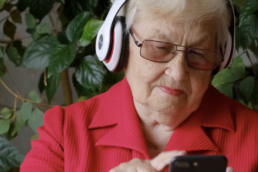According to the International Association for the Study of Pain, neuropathic pain (NP) is pain that arises from lesions and/or disease of the somatosensory system.
Written by:
Vaidhehi Veena Sanmugananthan
Edited by:
Georgia Hadjis
According to the International Association for the Study of Pain, neuropathic pain (NP) is pain that arises from lesions and/or disease of the somatosensory system. NP is a global health problem that is quite costly to treat. Two treatment options that have been used to treat NP are interventional pain management (IPM) and peripheral nerve stimulation (PNS). IPM includes diagnostic/therapeutic procedures administered through the skin that aim to modify pain signals in the body. Unlike other treatments of NP, like spinal cord stimulation, thus far there are no clear guidelines outlining the role and usage of PNS for NP treatment. UTCSP investigator Dr. Anuj Bhatia and colleagues surveyed international pain experts to investigate the current perception surrounding the use of IPM and PNS as treatments for NP.
A cross-sectional online survey was circulated to NP experts worldwide (pain medicine physicians, researchers, and leaders of professional pain societies). Of the 24 that responded, the most targeted areas using PNS were the distal common peroneal tibial and the sural nerves (60%). Overall, the aggregate reported NP treatment order was 1) non-opioid medications, 2) IPM which included epidural/perineural steroid injections and transcutaneous electrical nerve stimulation 3) pulse radiofrequency (RF) or RF ablation/denervation, 4) temporary PNS then permanent PNS. Half of the respondents (50%) reported that they preferred to trial non-neuromodulation treatments for 1-3 months before considering PNS. The majority of respondents (92%) believe that PNS should be administered early on in treatment plans for NP. The most common barriers reported for the use of PNS were high costs, lack of evidence supporting its usage, little to no proper training programs, and overall insufficient familiarity with the treatment.
This over-arching and broad survey is a steppingstone towards further understanding the opinions, pros and cons surrounding PNS as a treatment option for NP. However, it is clear that there still needs to be more research towards understanding PNS and the outcomes of this treatment.
This over-arching and broad survey is a steppingstone towards further understanding the opinions, pros and cons surrounding PNS as a treatment option for NP.

